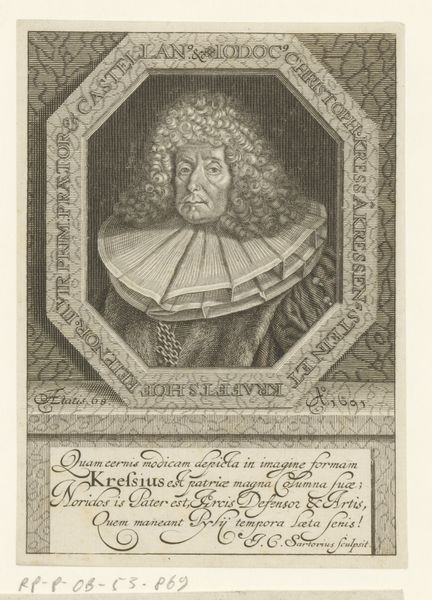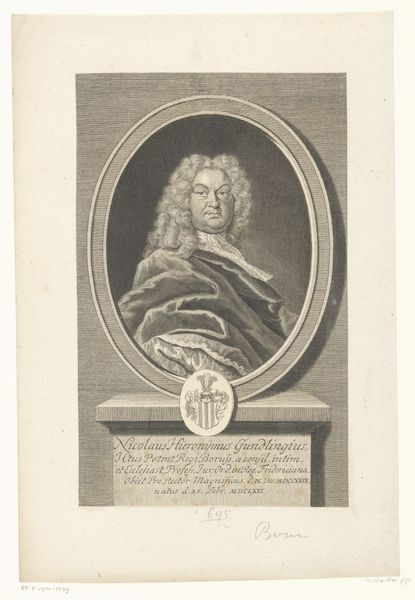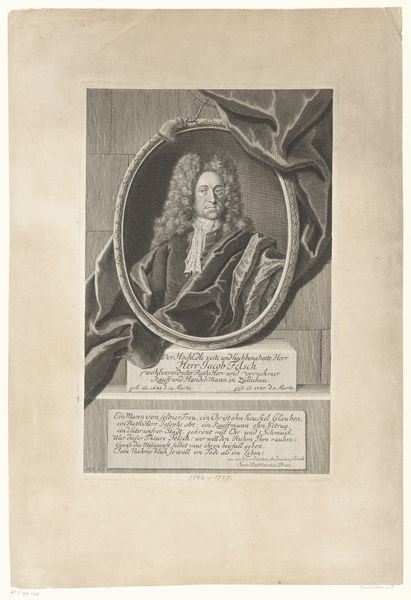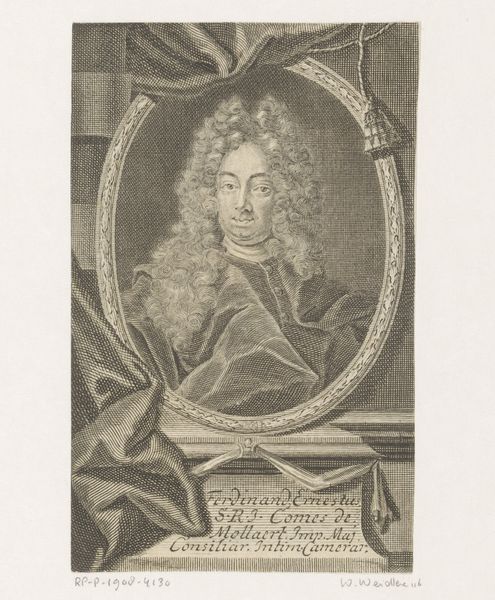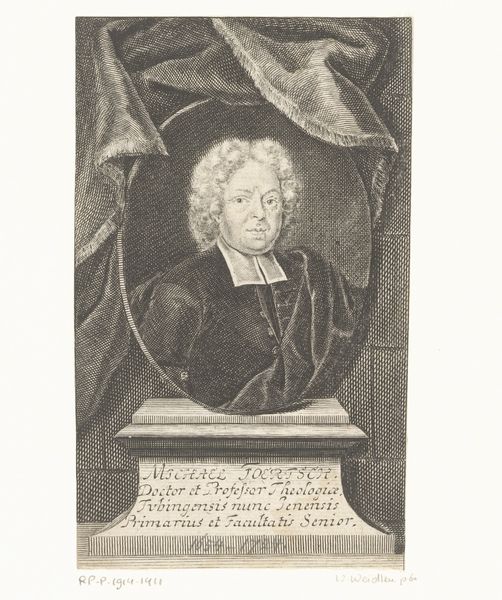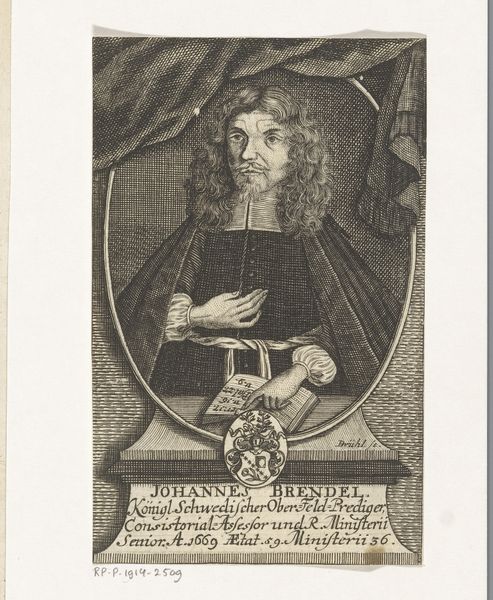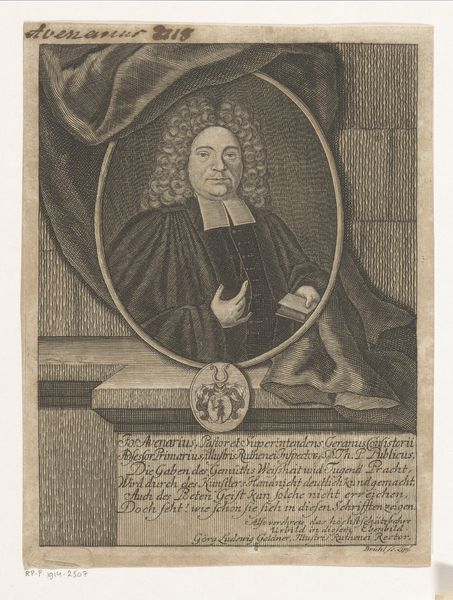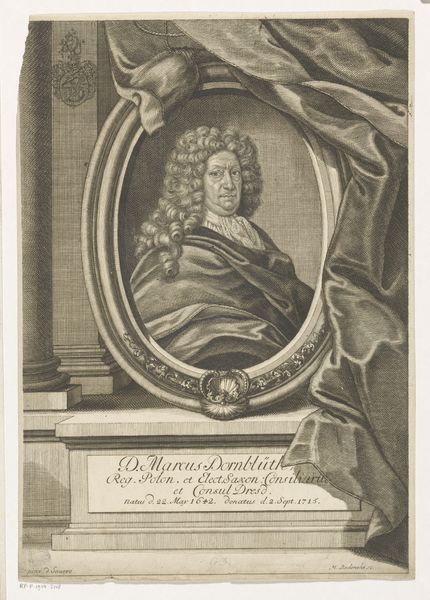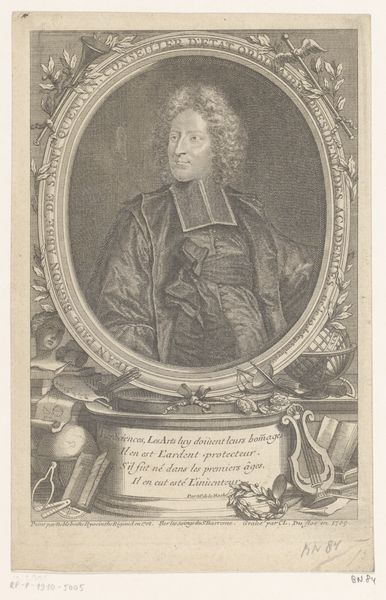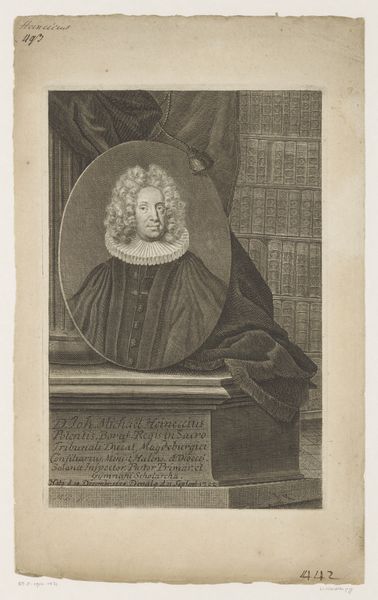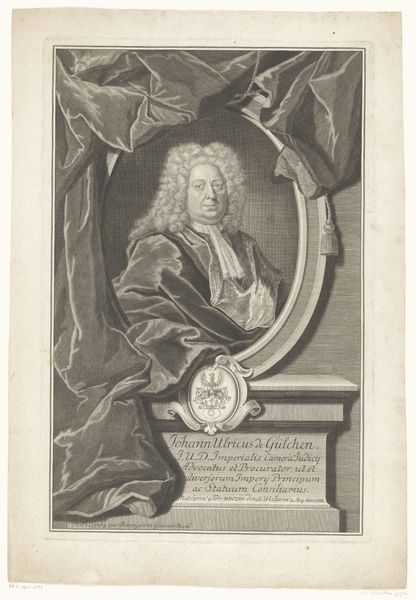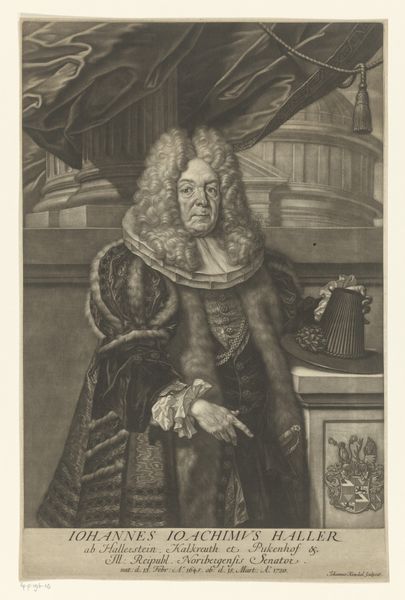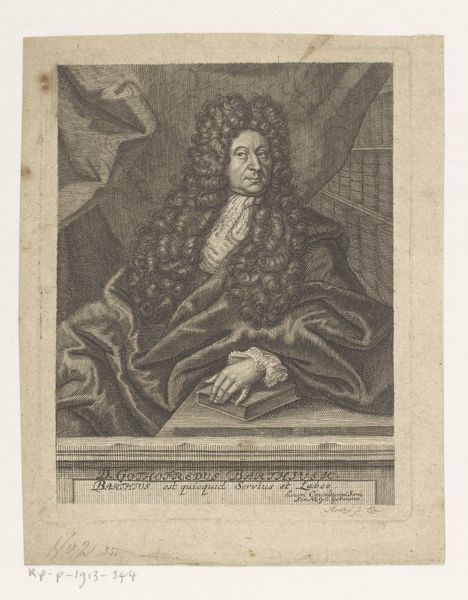
print, engraving
#
portrait
#
baroque
# print
#
engraving
Dimensions: height 185 mm, width 142 mm
Copyright: Rijks Museum: Open Domain
Curator: So, this print is "Portret van Conrad Mel" by Johann Benjamin Brühl, made sometime between 1705 and 1763. It's currently held at the Rijksmuseum. The engraving itself, rendered with such clear lines, gives the sitter a formidable presence. What strikes you initially about this portrait? Editor: I find myself thinking about the repetitive labor that must have gone into this work. All those fine lines...what do you make of the material reality of a print like this in the 18th century? Curator: Exactly. Think about the copperplate, the tools, the repetitive actions required to create those uniform lines. How does this relate to the function of a print like this in society? Editor: Well, presumably it would allow for fairly wide distribution of his image, allowing access to portraits for people who couldn't commission painted portraits. Curator: Precisely! The reproducibility is key, impacting viewership and consumption of images. We need to also consider the socio-economic context surrounding its production. Who was Conrad Mel, and what does his portrayal within this stylized framework tell us about societal values at the time? Consider, too, the role of printmakers like Brühl: were they seen as artists or artisans? How does the "original" even exist, and is that even important given the wide distribution? Editor: The question of the original and the copy, the art versus the craft, really reframes how we should appreciate prints such as this one. It’s not just about aesthetics but about production, distribution, and labor. Curator: Absolutely. We start to see the intricate network of production and how it influenced not just art but broader society. Focusing on process and materials demystifies the artwork and connects it to the lived experiences of the people who made it. Editor: It completely transforms the way I understand the print. I will always see that repetitive, laborious act. Curator: Me too. Thinking materially connects art to history.
Comments
No comments
Be the first to comment and join the conversation on the ultimate creative platform.
